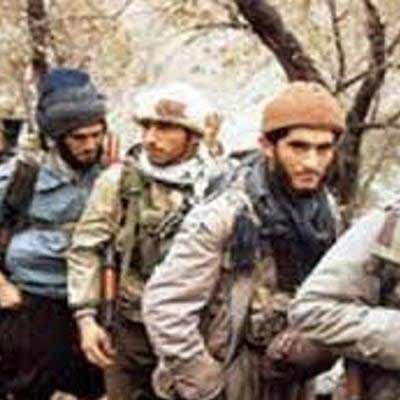Operation Fath-6
Masuma Sajjadian
234 بازدید
The Islamic Revolutionary Guard Corps carried out Operation Fath-6 in 1987 in the northern region of Erbil. With this operation they intended to destroy the military centers and facilities of Saddam's army located in this vicinity.[1]
In 1987, the Ramadan Base, by organizing and implementing operations deep on Iraqi soil, took the war into a different direction.[2] The effort to expand cooperation with Iraqi groups opposed to Saddam's regime led to the preparation and implementation of the irregular operation - Operation Fath-5 - to the north of Sulaymaniyah on April 15, 1987. This operation was carried out inside Iraqi territory. Thereafter, Operation Fath-6 was carried out by the forces who were under the command of the Ramadan Base. They consisted of the Malik Ashtar Brigade, the 65th Hijrat Brigade, the Shahadat Special Battalion, forces from the Iraqi Kurdistan Democratic Party, the Iraqi Kurdistan Hizbullah and the Iraqi Hizbut Dawah.[3]
The operation was carried out in the early hours of the morning on June 17, 1987, in Erbil Iraq. The movement of IRGC forces from the launching point to the targets was carried out under full protection, and was completed without any conflict. The operation was carried out on two axes. The forces of the Malik Ashtar Brigade, Kurdistan Democratic Party, Hizbollah Kurdistan, and Hizbut Dawah, who were in the first axis (Kurt-Salim Khan axis), captured the heights of Kurt, Salim Khan, and Sheikhan. They also managed to destroy 70% of an Iraqi battalion that was present there. In the second axis (Merge Sur-Diana axis), the Kurdistan Democratic Party forces and the Shahadat Special Battalion occupied the strategic heights of Qalandar and set fire to the Kharand Communication Bridge and blocked the Merge Sur-Diana Road. The forces entered the city of Merge Sur and, via street gunfights, the Baathist forces retreated to the west of the city. The forces of the Ramadan Base were able to capture the city after about ten hours, with all the bases of the city falling. Only two houses belonging to the heads of the Jashs (Kurds who were allied with the Iraqi government) and one checkpoint resisted. The fighting to capture these three places lasted until the morning. In this attack, the military base, government buildings, police and intelligence centers were seized, while six long-range Iraqi cannons were also destroyed. Twenty Iraqi soldiers were killed and wounded, and 100 captured[4].
Due to the strong performance of the Iranian forces in capturing the city of Merge Sur, some of the ammunition transported to the city was not used.[5]
The next day (June 18), the troops were able to destroy the Qasr Training Barracks, located in the general area of Erbil Province, with the support of artillery fire. The Iraqi army sent a battalion of troops to the city, but this battalion was ambushed by Iraqi opposition forces and forces under the command of the Ramadan Camp on the Diana-Merge Sur Road and suffered serious losses.
Furthermore, the Peshmerga of the Patriotic Union of Iraqi Kurdistan captured a base of the Iraqi 120th Light Battalion in the Shiqlawah Hiran area of Erbil Province and captured six of its soldiers. In this attack, the Peshmerga took five Kalashnikovs, one RPG7 and one car.[6]
In summary, in this operation, about eight hundred personnel from the Iraqi army were killed and wounded, and more than 130 were captured.[7] In continuation of this process, Operation Fath-7 was carried out on July 7, 1987 in the Halabja region. It further aimed to destroy Iraqi military and economic facilities with forces that were under the command of the Ramadan Base.[8]
[1] Samii, A., Descriptive record of the operations of Islamic warriors during the eight years of holy defense, Tehran: Vice-Chancellor of Propaganda and Publications of Vali Faqih Representation in the Ground Force, 1997, p. 337.
[2] Drodian, M., a review of Iran-Iraq War, Volume 4: Shalamcheh to Halabcheh, Tehran: Islamic Revolution Guards Corps War Studies and Research Center, 1997, p. 184.
[3] Lotfollahzadegan, A., Journal of the Iran-Iraq War, Book 49: Ratification of Resolution 598, Political and Military Fields, Tehran: Islamic Revolutionary Guard Corps Sacred Defense Documents Center, Center for War Studies and Research, 2008, p. 213.
[4] Ibid, pp. 213, 224, 235, and 236; Samii, Ali, Descriptive report of the operations of the fighters of Islam, pp. 337 and 338.
[5] Lotfollahzadegan, A., Journal of the Iran-Iraq War, Book 49, p. 236.
[6] Ibid, p. 224.
[7] Samii, A., Descriptive record of the operations of Islamic warriors during the eight years of holy defense, pp. 338 and 339.
[8] Ibid, p. 346.



